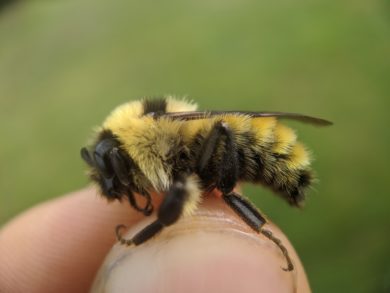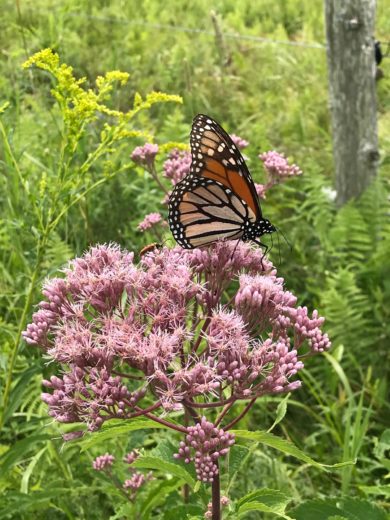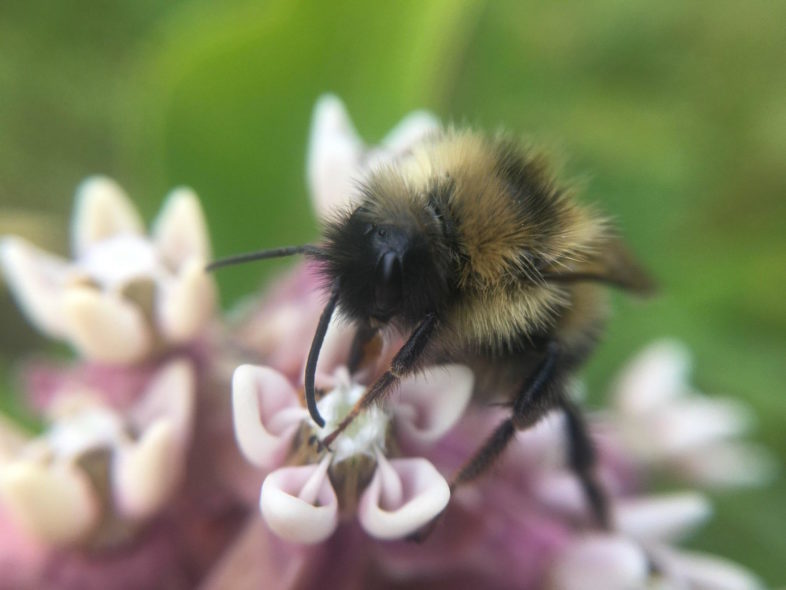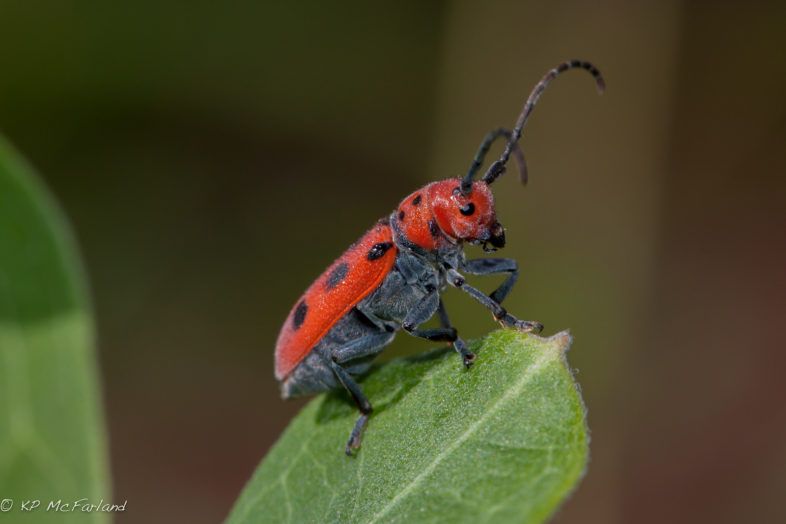By Jason Hill and Pete Kerby-Miller
We get it–many of us look upon a utility rights-of-way (ROW) as an eyesore, especially when they blaze up the side of our forested mountains here in New England. Of course, they are crucial infrastructure components for delivering electricity, telephone, and cable service across the landscape, but they also provide unintentional habitat that benefits wildlife populations. Though these human-managed lands seem far from pristine, they can serve as essential pieces in a mosaic of habitat types. Just as hayfields are essential habitat for grassland birds like Bobolinks, consensus is building that the scrubby open habitat maintained under ROWs plays an important role in the conservation of a diverse suite of wildlife, including New England cottontail, American Woodcock, wood turtle, and insect pollinator communities.
If you own property in north-central Vermont with the specific ROW shown on the map below (as thick purple lines), then we’d like to connect with you about conducting pollinator surveys on your property this summer. JUNE UPDATE: We’ve expanded our study area outside of this core area to increase our sample size. If you own ROW anywhere in central or north-central Vermont then we’re interested!

VCE Biologist Spencer Hardy safely holds a male (stingless) Golden Northern Bumble Bee (Bombus fervidus). © Spencer Hardy, some rights reserved (CC-BY-NC). https://www.inaturalist.org/observations/59182189
There is increasing evidence of an ongoing “insect apocalypse” that suggests that the abundance, diversity, and sheer biomass of pollinators has dramatically declined worldwide. When VCE coordinated the Vermont Bumble Bee Atlas, we documented severe declines in the abundance and distribution of nearly half of Vermont’s bumble bee species in the last 30 years. Nearly one-third of our historic bumble bee species are now thought to be extirpated entirely from the state. These declines are probably not limited to just bumble bees; bumble bees forage from a vast diversity of flowers, so their populations likely indicate overall habitat quality available for the entire pollinator community.

Monarch on Joe Pye Weed / © K.P. McFarland
Monarch butterflies are another unfortunate example of a pollinator species with an uncertain future. In California, annual overwintering counts of adult monarchs have declined by 99.9%, from ~4.5 million monarchs in the 1980s to less than 2,000 individuals in 2021. Yes, you read that correctly. Here in the east, where perhaps 90% of the world’s monarchs live, we have fared slightly “better”; eastern U.S. monarchs have “only” declined by >80% over the last 20 years. The U.S. Fish and Wildlife Service recently announced in December of 2020 that monarchs will likely be Federally listed under the Endangered Species Act–but not until 2024. “Why not sooner,” you ask? The U.S. Fish and Wildlife Service announcement pointed to dozens of other species with an even higher risk of extinction than monarchs in the immediate future, that require more immediate attention.
While the causes of pollinator declines are complex and interwoven, climate change, habitat loss, and the intensification of management practices on industrial agricultural lands (especially insecticide use) are strongly suspected of being prominent factors. In the U.S., most new agricultural lands are created by converting grasslands, and from 2008 to 2016 more than one million acres of cropland were created each year. Roughly over that same period, insecticide toxicity more than doubled for pollinators, as U.S. pesticide use shifted towards more toxic pyrethroids and neonicotinoids–despite that class of pesticides being largely banned by the European Union in 2018 to protect bee populations. Here in Vermont, the reduction of milkweed–monarch caterpillars’ only source of food–may be largely responsible for monarch declines. For comparison, an average acre of unconverted grassland typically contains >60 times as many milkweed pods as an acre of cropland. Simply put, each year there is less habitat to support pollinator communities, and that habitat is increasingly hostile toward pollinator populations.

A Fernald’s Cuckoo Bumblebee, one of the rarest bumblebee species in Vermont, nectars on milkweed flowers. / © Spencer Hardy
While the current situation can feel unencouraging at times, scientific monitoring and research programs offer a pathway toward a more sustainable future for pollinators. At the Vermont Center for Ecostudies, we have decades of experience organizing large-scale pollinator research initiatives (e.g., The Vermont Bumble Bee Atlas, the Vermont Butterfly Survey, the Vermont Wild Bee Survey, and eButterfly). We are continuing that legacy by commencing a new research project this summer on ROW.
And we need your help, landowners. This summer, we will begin this new research and monitoring project in utility rights-of-way in central Vermont. Weekly in July, we will conduct swing net surveys to count individuals of all bumble bee species (all bees will be released unharmed). We will also survey for all life stages of monarchs during an intensive two-week period at the end of July and beginning of August. This timing corresponds with the International Monarch Monitoring Blitz organized annually by Mission Monarch.
So if you’re a landowner along those rights-of-ways, then we’d like to connect with you about conducting weekly surveys for pollinators on your ROW this summer. Please reach out to Jason Hill (). Financial support from the Horne Family Foundation helped get this project off the ground, but the success of our work relies on the goodwill of landowners supporting pollinator conservation research. Please reach out to your friends and neighbors about backing this research. Together, we can take action to conserve wildlife.

Red Milkweed Beetle (Tetraopes tetrophthalmus) © K.P. McFarland

I have 13 Acres of Velco Right a way on my property in Sharon Vt.
Is this area where you need to perform surveys?
Hi John,
Thank you for commenting! Unfortunately, no. We’re timing our surveys with the woody vegetation control efforts that were performed last fall and this April on ROW east of Montpelier continuing over towards Danville, and up towards Hardwick. Fingers crossed that we connect with some landowners up there. Thank you so much for reaching out!
Hi John,
We’re actually expanding our survey area, because we’ve had a hard time connecting with landowners in the Danville area. If your offer still stands, then I’d love to include your property. I look forward to hearing from you. Jason
We would be happy to participate (780 South Main Street). There is a patch of milkweed in a patch near our barn door. You may note the welcoming sign for the monarchs. Our gardens have been planned to encourage monarchs and bumblebees. Looking forward to hearing from you.
Diana
Here’s an item you might be interested in. New England Central VT Railroad is planning to spray herbicide on the length of their line, basically the entire State. Below is their application.
https://agriculture.vermont.gov/2024-new-england-central-railroad-permit-application-materials
Many thanks Neil–we have similar minds. I think there’s likely a lot of overlap in pollinator communities along railroads and under powerlines. Cheers.